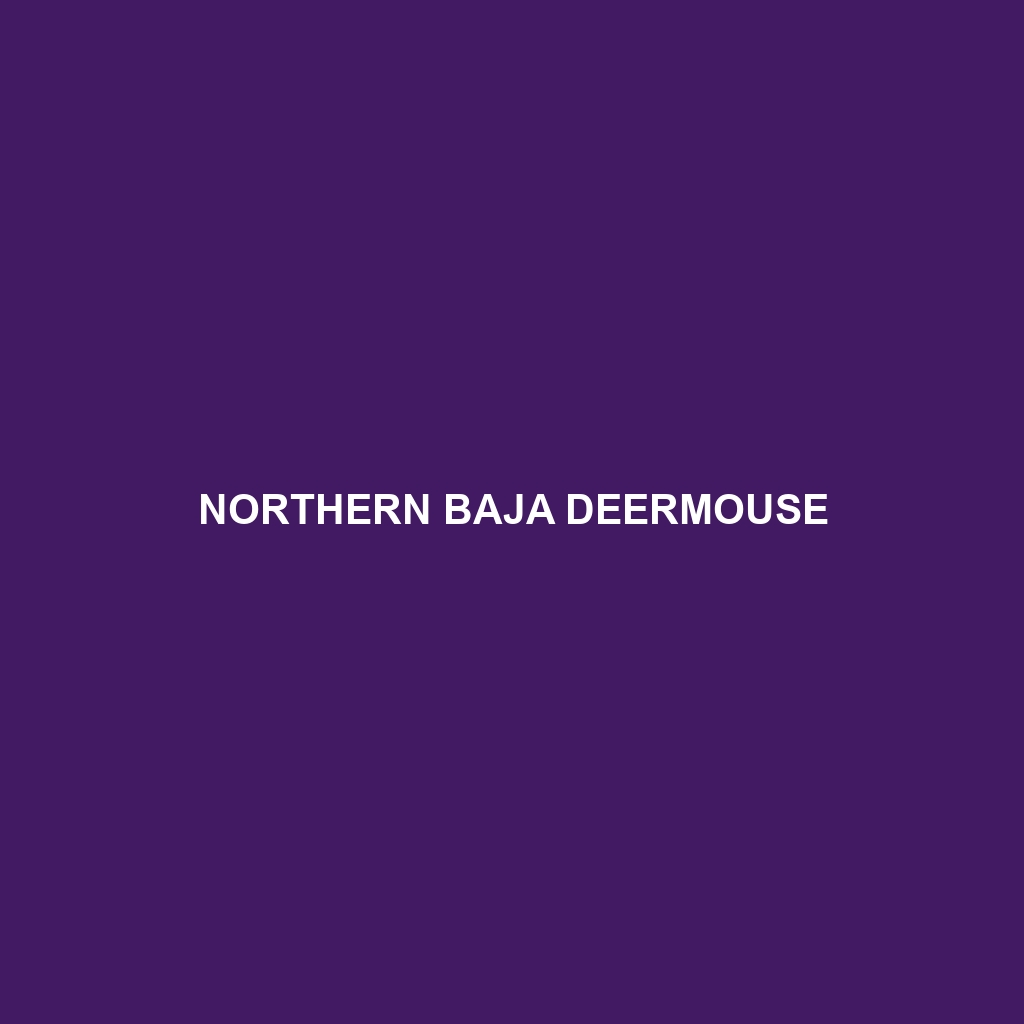Northern Baja Deermouse (Peromyscus jeffersoni)
Common Name: Northern Baja Deermouse
Scientific Name: Peromyscus jeffersoni
Habitat
The Northern Baja Deermouse is primarily found in the coastal regions of Northern Baja California, Mexico. This species thrives in a variety of habitats, including chaparral, scrublands, and grasslands. It prefers areas with ample cover, such as dense vegetation and rocky outcrops, which provide both shelter and foraging opportunities.
Physical Characteristics
Typically, the Northern Baja Deermouse measures about 7 to 10 inches in length, including the tail. Its fur is characterized by a soft, light brown to gray coloration on the back, with a white underbelly. Distinctive features include large ears, which enhance its hearing capability, and a long, tufted tail that aids in balance. The species also possesses slightly larger hindfeet compared to other deermice.
Behavior
Northern Baja Deermice are primarily nocturnal, engaging in most of their activities during the night. They are known for their agile movements and adept climbing skills, which help them evade predators. Socially, they tend to be solitary, although males may establish territories overlapping with females during the breeding season. Their vocalizations include chirps and squeaks, particularly during mating.
Diet
The diet of the Northern Baja Deermouse consists mainly of seeds, fruits, nuts, and insects. Seasonal variability in food sources leads them to adapt their foraging behaviors, making them opportunistic feeders. This flexibility in diet is crucial for survival in fluctuating environmental conditions.
Reproduction
Breeding typically occurs between March and November, with peak activity during the warmer months. Female Northern Baja Deermice can produce two to three litters per year, with each litter containing approximately three to six offspring. Young are born hairless and blind, relying on their mother for nourishment and protection during the early stages of development.
Conservation Status
The current conservation status of the Northern Baja Deermouse is classified as Least Concern by the IUCN. However, habitat loss due to urban development and agriculture poses potential threats, highlighting the need for ongoing monitoring.
Interesting Facts
One fascinating aspect of the Northern Baja Deermouse is its ability to survive in arid environments, showcasing remarkable adaptations such as water conservation techniques and nocturnal foraging behavior. Additionally, it plays a critical role in the ecosystem as both a seed disperser and a prey species for various predators.
Role in Ecosystem
In its ecosystem, the Northern Baja Deermouse serves as an important link in the food web. As a seed eater, it facilitates the growth of plants through seed dispersal, while also providing nourishment for predators such as hawks, owls, and snakes. Its presence indicates a healthy environment, reflecting the balance of species within the region.
This SEO-optimized species description includes keywords relevant to the Northern Baja Deermouse while offering a comprehensive overview of its habitat, characteristics, behavior, diet, reproduction, conservation status, interesting facts, and ecological role.
